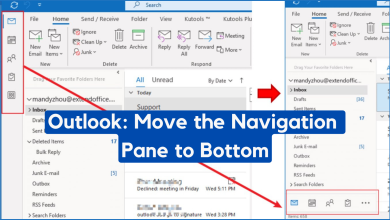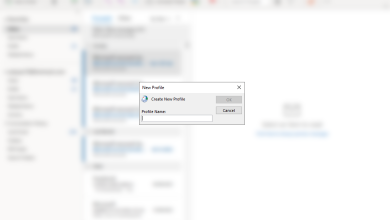[FIX] Outlook Trusted Platform Module Malfunction Error Code 80090030 on Windows 10
This error code is related to the Trusted Platform Module (TPM) with respect to Microsoft Outlook. A TPM is a microchip designed to provide basic security-related functions, primarily involving encryption keys. The TPM is usually installed on the motherboard of a computer or laptop and communicates with the rest of the system using a hardware bus. When TPM stops working properly then this error is most likely to occur. Computers that incorporate a TPM have the ability to create cryptographic keys and encrypt them i.e. binding or wrapping. Users face this error while working on Microsoft Outlook which uses the Trust Platform Module protocol in its execution. The error notification is as follows:

What Causes Outlook Trusted Platform Module Malfunction Error Code 80090030?
After thorough review and research, our research team has finalized the causes behind the error under consideration. These causes were reported online on different forums and are as follows:
- TPM not working properly: Technical authorities have reported the keys in TPM are majorly responsible for this error and due to this, TPM would not be able to work properly and MS Outlook will undergo the same mentioned error.
- Migrated Machine: From repeated research, we have observed that this issue arises when a user is on a machine that was not originally imaged with Office 365. It only affects users who have been migrated from one platform to another.
- Upgradation to Office 365 Business: This issue mostly happens with MS Outlook users when they switch through the process of up-gradation from Office 2016 Standalone to Office 365 Business.
Solution 1: Reconnect Your Work Account
Sometimes, the connection with online servers i.e. exchange or organization servers may get interrupted due to numerous reasons. When this happens, TPM fails to initialize connection protocols, ultimately causing the error. Therefore, disconnecting the Work Account and then reconnecting it proved to be a helpful solution for many users in the online community. Follow the steps given below to do so:
- Click Start, search Outlook, and open it. This will open Microsoft Outlook that is primarily used as an email client but it is mostly used as a source to remain connected with your organization for communications and meetings scheduled.

Opening Microsoft Outlook - Click Files. This will take you to a new window and by default, you will remain on the Info tab. In the right pane, click Account Settings > Account Settings…

Opening MS Outlook Account Settings - Switch to the Email tab, select the available email account you want to remove and click Remove to successfully remove your account from Microsoft Outlook Emails. (In case you have multiple accounts, you may remove them one by one or select them all at once and click Remove for removal)

Removing Email Account(s) from MS Outlook - Now switch to the Data Files tab, select the available email account you want to remove and click Remove to successfully remove the account(s) or data files that already exist, from Microsoft Outlook Data Files.

Deleting Outlook Data Files - Now click Add… and specify the location where you want to save your new Outlook data file (by default, it is in the Windows AppData folder).

Creating a New Outlook Data File - Now that you have created a new Outlook data file, you need to add your Microsoft 365 account in MS Outlook. To do that, click Files. This will take you to a new window and by default, you will remain on the Info tab. Under Account Information, click on + Add Account. This will open a new window that will request you to provide your account details i.e. email address, type, password, etc.

Adding an Account in MS Outlook - Restart your PC. This will help in the cause of cache reset (avoiding any arbitrary errors).
- Launch Microsoft Outlook and see if the problem is fixed or not. In case it is not then your problem is related to ADAL (Active Directory Authentication Library). Proceed with the next solution to get rid of this problem.
Solution 2: Disable ADAL
Sometimes, the modern authentication feature in newer Outlook versions (2013 or above) results in the propagation of the error under consideration. To resolve this issue, there are two possibles. Either disable ADAL (which we are going to do in the procedure below) or enable MFA (Multifactor Authentication. This solution proved to be helpful for a lot of users online. Follow the steps given below to disable ADAL (Authentication Directory Authentication Library):
- Close Microsoft Outlook as we are going to play with its Windows registry files in the further steps.
- Press Windows + R keys on your keyboard to open the Run dialog box. Type Regedit in the search box and click OK. This will open a Windows Registry window that contains registry configurations for all user-installed applications and Windows applications.
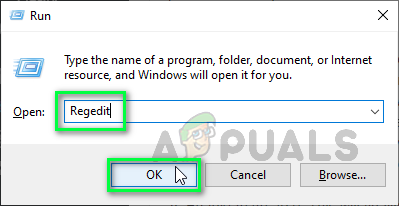
Opening Windows Registry Editor - Copy-paste the location address given below in the search bar. This will open the Common Identity folder of Microsoft Office registry files.
\HKEY_CURRENT_USER\Software\Microsoft\Office\16.0\Common\Identity

Opening MS Office Common Identity Folder - Right-click in the blank space and select New > DWORD (32-bit) Value. This will open a key management window in which it will ask you further details regarding DWORD. The reason for creating this DWORD value is to control the ADAL feature of Microsoft Outlook.

Creating the REG_DWORD - Type EnableADAL as the name of the DWORD file and press Enter.
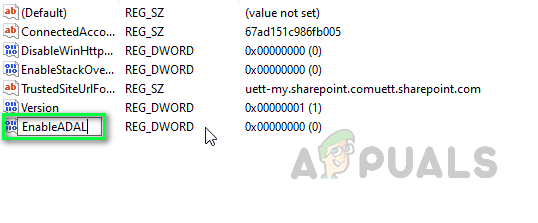
Renaming DWORD File - Set the Value data to 0 and click OK. This will disable the ADAL feature of Microsoft Outlook.
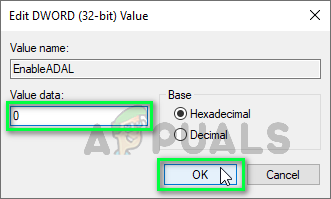
Disabling ADAL Feature of Microsoft Outlook - Close Windows Registry Editor and restart your PC to save changes.
- Try running Microsoft Outlook. As the cause of the error has been eliminated, your problem should be fixed now.

